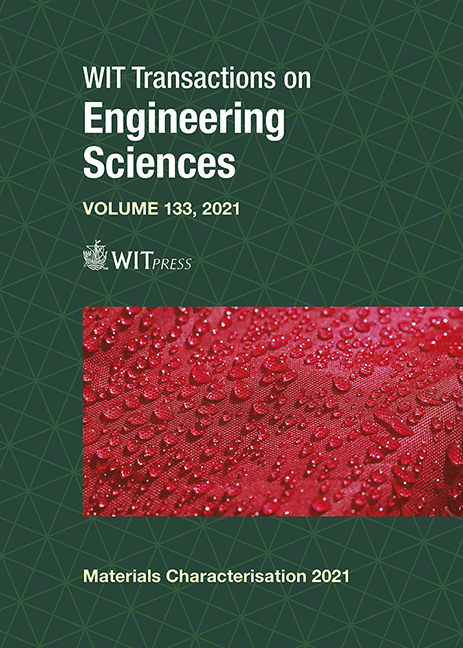USE OF POLYETHYLENE AS A FEEDSTOCK FOR VALUE ADDED PRODUCT RECOVERY: WAX RECOVERY FROM PYROLYSIS
Price
Free (open access)
Transaction
Volume
133
Pages
7
Page Range
93 - 99
Published
2021
Paper DOI
10.2495/MC210091
Copyright
Author(s)
SULTAN MAJED AL-SALEM
Abstract
One of the main engineering objectives nowadays is to develop and design a sustainable practice whilst operating a technology that can yield value added products and be environmentally friendly in the same time. No better example can be provided of ongoing research of such technologies other than waste to fuel and energy solutions. Such technologies can recycle solid waste whilst maintaining a sustainable practice and operation. A prime example of such is the technique of pyrolysis, where waste is deteriorated in inert environments and products of such process are used in the place of petroleum fossil-based ones. One of the products of pyrolysis namely when using a polyolefin polymer is chemical waxes that were proven recently as a valuable product on the market. These waxes have a potential of having fuel range hydrocarbons and their market is of growing capacity as of late. In this work, the pyrolysis of polyethylene (PE) sourced as a virgin extrusion grade and used a translucent pellets, was used to produce waxes in the pyrolysis operation of fixed bed batch type. The pyrolysis reaction temperature took place between 500 and 800°C and waxes were collected and characterised for their fuel potential amongst their physical and rheological properties. The elemental carbon in the wax ranged between 81.04% to 87.67% showing high potential of carbon based material similar to the one of the original high density polyethylene (HDPE) feedstock material. Furthermore, the dynamic viscosity (at 40°C) ranged between 31 and 171 Centipoise. It is worth noting the that the fuel range of the wax was of high range of some 70% diesel fuel for material collected at 500°C which is attributed to the slow pyrolysis regime and the branched nature of the feedstock. This points towards utilising this product as a potential fuel source in addition to further upgrading instead of classical refinery ones.
Keywords
polyethylene, pyrolysis, diesel, energy, fuel





